LOCATION
Meru Conservation Area, Kenya, east Africa.
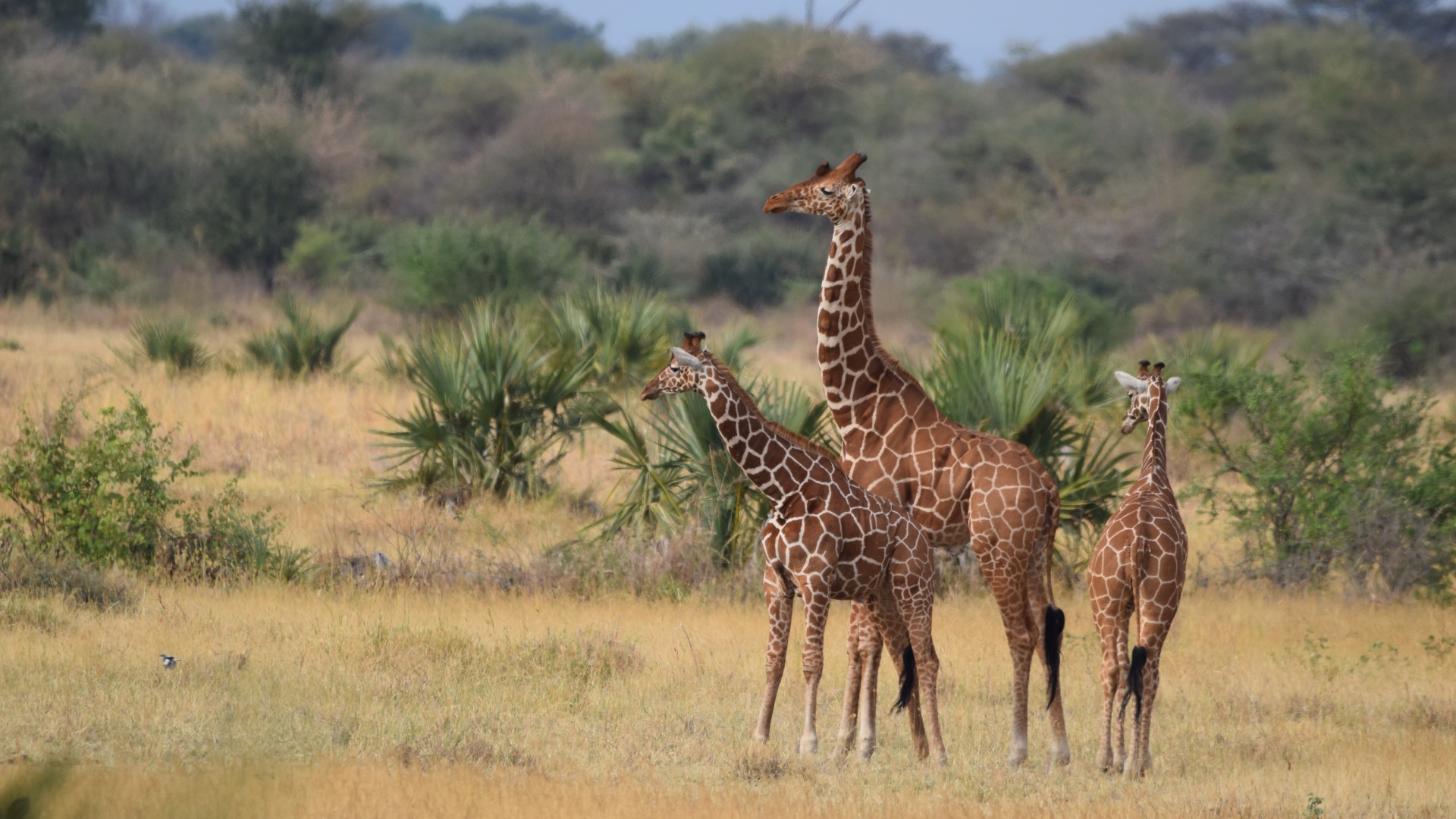
Through our Saving Meru’s Giants initiative, we aim to reduce human-elephant conflict, address threats faced by giraffes, promote coexistence between people and herbivores and safeguard habitat in the Meru Conservation Area.
Meru Conservation Area, Kenya, east Africa.
Human-elephant conflict; habitat loss; poaching using firearms, snares and spears; increased competition for natural resources such as water; an unpredictable climate and drought.
Elephant and giraffe monitoring; Conservation Ambassadors; conflict mitigation; honey production; de-snaring; Village Savings and Loan Associations.
Kenya Wildlife Service, Wildlife Research and Training Institute, local communities.
2021
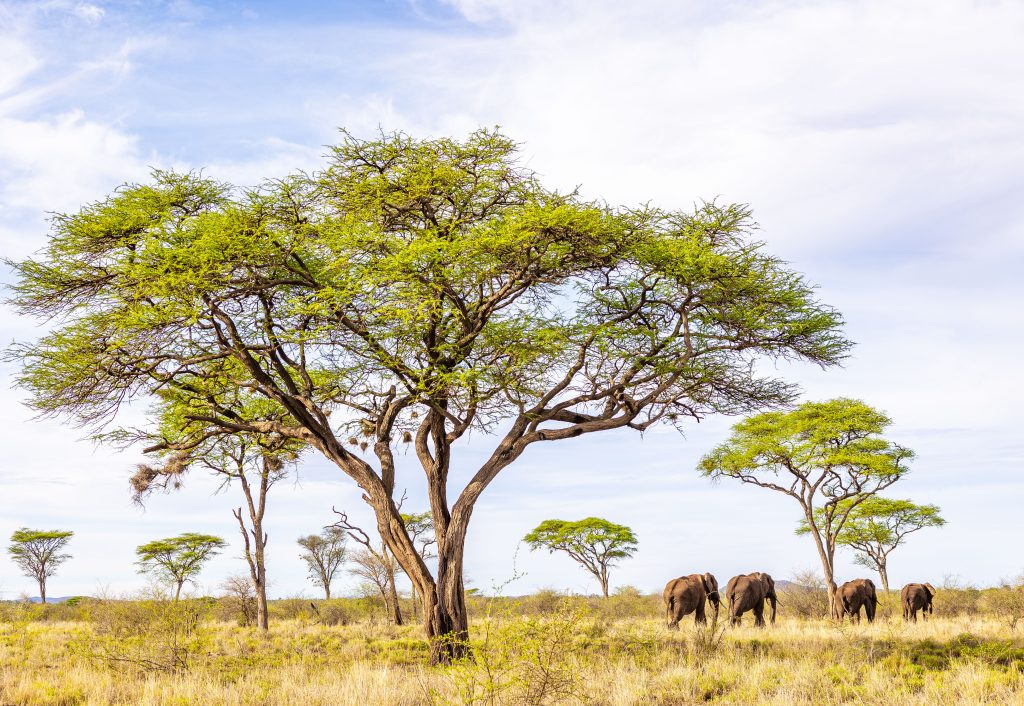
African savannah elephants (Loxodonta africana) in Meru National Park © Peter Ndung’u
The Meru Conservation Area is a 722,000 miles2 (1.87 million km2) area comprised of Meru and Kora National Parks and Mwingi and Bisanadi Wildlife Reserves and is surrounded by community lands.
Meru is where the story of Born Free began, where George and Joy Adamson taught Elsa the lioness to be wild and free.
Born Free has been working in Meru since 2014, and our work recently expanded to protect elephants, giraffes and other large herbivores in this ecosystem.
Meru is a critical landscape for Kenya’s elephants, a refuge and important habitat for numerous elephants that have migrated between Samburu and Laikipia. In the 1980s, poaching devastated elephant numbers in Meru from thousands to just a few hundred. Since then, careful restocking and management has resulted in a steady increase to around 1,000 elephants today, representing approximately 12% of a wider 8,000-strong population in the Laikipia-Samburu-Meru-Marsabit Ecosystem.
Meru is also a stronghold for endangered reticulated giraffes, with approximately 1,400 individuals found here. Globally, just 16,000 individuals remain in the wild, so the Meru giraffes represents almost 10% of the world’s population.
Human populations have expanded dramatically in this region. Many people live in poverty, with the majority relying on agriculture, and this increase in crop-farming, grazing and habitation has degraded critical elephant and giraffe habitats and migration routes. This has also led to a dramatic increase in conflicts between people and elephants, especially as elephants forage on the crops grown next to Meru National Park and are forced to share dwindling water resources with communities.
To protect their families and livelihoods, farmers may attack elephants or retaliate using spears and other methods. Not only is this deadly for elephants but also leaves them with psychological symptoms similar to PTSD, which can increase elephants’ aggression towards people in the future, posing an even more dangerous threat to communities.
In addition, some people hunt bushmeat for food or to sell for the income, particularly in challenging times such as during droughts. Snaring and other illegal activities in Meru National Park is contributing to the decline of many threatened species, including reticulated giraffes.
Born Free launched Saving Meru’s Giants in 2021 to address these issues and protect these magnificent herbivores.




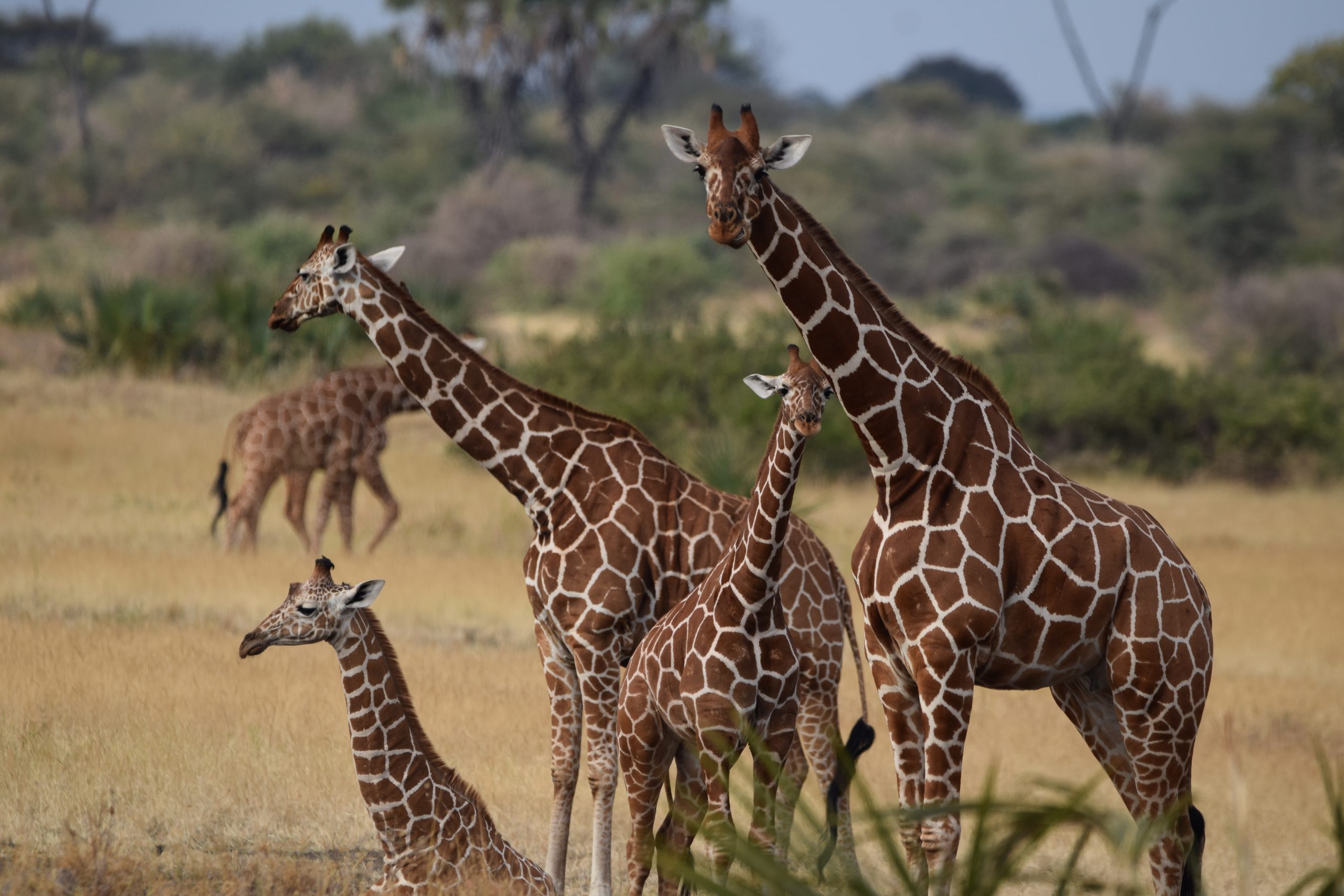
Giraffes (Giraffa camelopardalis reticulata) in Meru © Born Free
Despite the importance of these populations, the elephants and giraffes of Meru have gone largely unstudied. Without the knowledge of population trends, we cannot determine which conservation actions are needed or the impact of our work. Since 2021, we have been on a mission to create a comprehensive database of each individual elephant and giraffe in Meru.
Our Conservation Ambassadors are key members of our team. Each Ambassador, who has shown a huge passion for wildlife, has been selected from their community and trained in key skills. Coming from communities where crops, including their own, have been raided by elephants, they have a deep understanding of the issues and complex nature of living alongside wildlife. Seeing both sides of the issue, they are crucial to all areas of our work.
They ensure that communities feel heard, their issues are addressed quickly, and that retaliatory killings and persecution of wild animals is prevented. Our Conservation Ambassadors are often among the first responders to conflict incidents and play a big role in persuading communities not to retaliate.
We utilise the natural avoidance behaviour of elephants to prevent crop raiding, which could lead to conflict. Elephants have an innate fear of bees because of the risk of being stung in soft sensitive areas. Beehive fencing, successfully pioneered by Save the Elephants and replicated in many parts of Africa, involves erecting fencesaround farms, then stringing beehives up between the posts, linked by wires. When the fence is disturbed by an elephant trying to get to the crops, the hives sway and the bees become aggravated, causing them to come out of the hive. In turn, the elephants flee from the swarm, and leavethe farm, with the crops remaining intact.
We also distribute a human-elephant conflict toolkit containing simple and cost-effective methods that local people can use to minimise conflict, such as flashing lights, chilli bricks and unpalatable crops. The toolkit is packed full of simple, low-cost conservation strategies which empower people to take control of how they tackle conflict. Our Conservation Ambassadors are on-hand to provide training on the use and implementation of the methods described in the toolkit.
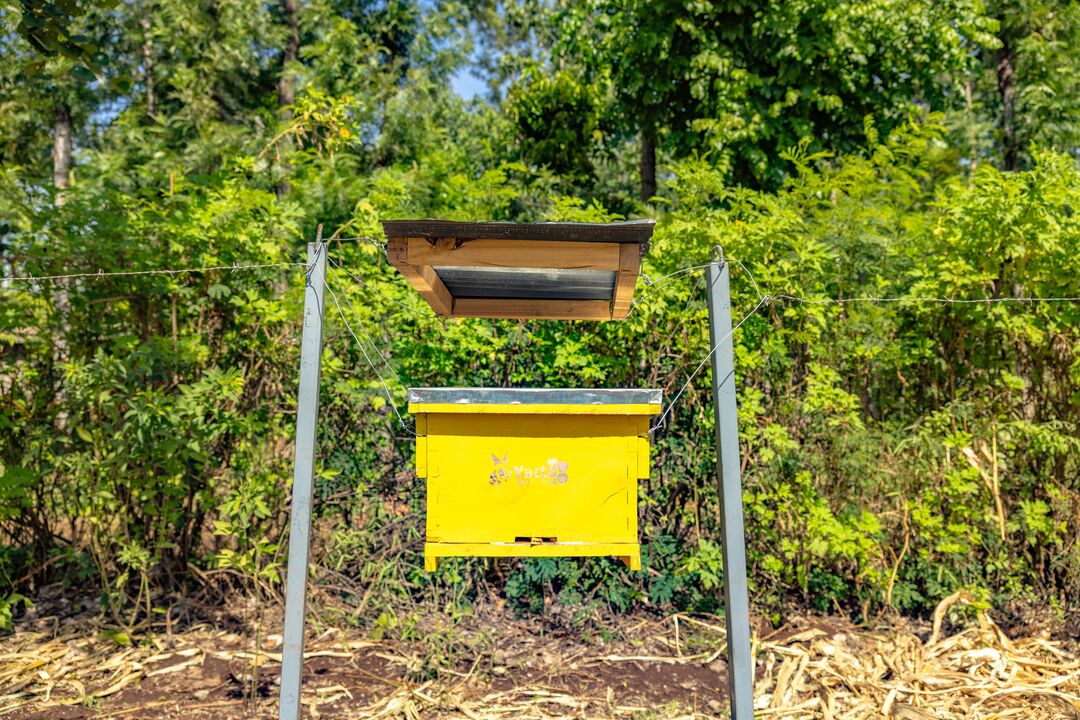
Born Free beehive fence in Meru © Peter Ndung’u
Not only do beehive fences help reduce human-elephant conflict, through the production of honey, they can also provide a vital (elephant-friendly) source of income for farming families living in poverty. In collaboration with partners in the field, we help farmers process and sell their honey. The additional income can help alleviate the costs of conflict with elephants and improve the lives of families living alongside these giant mammals.
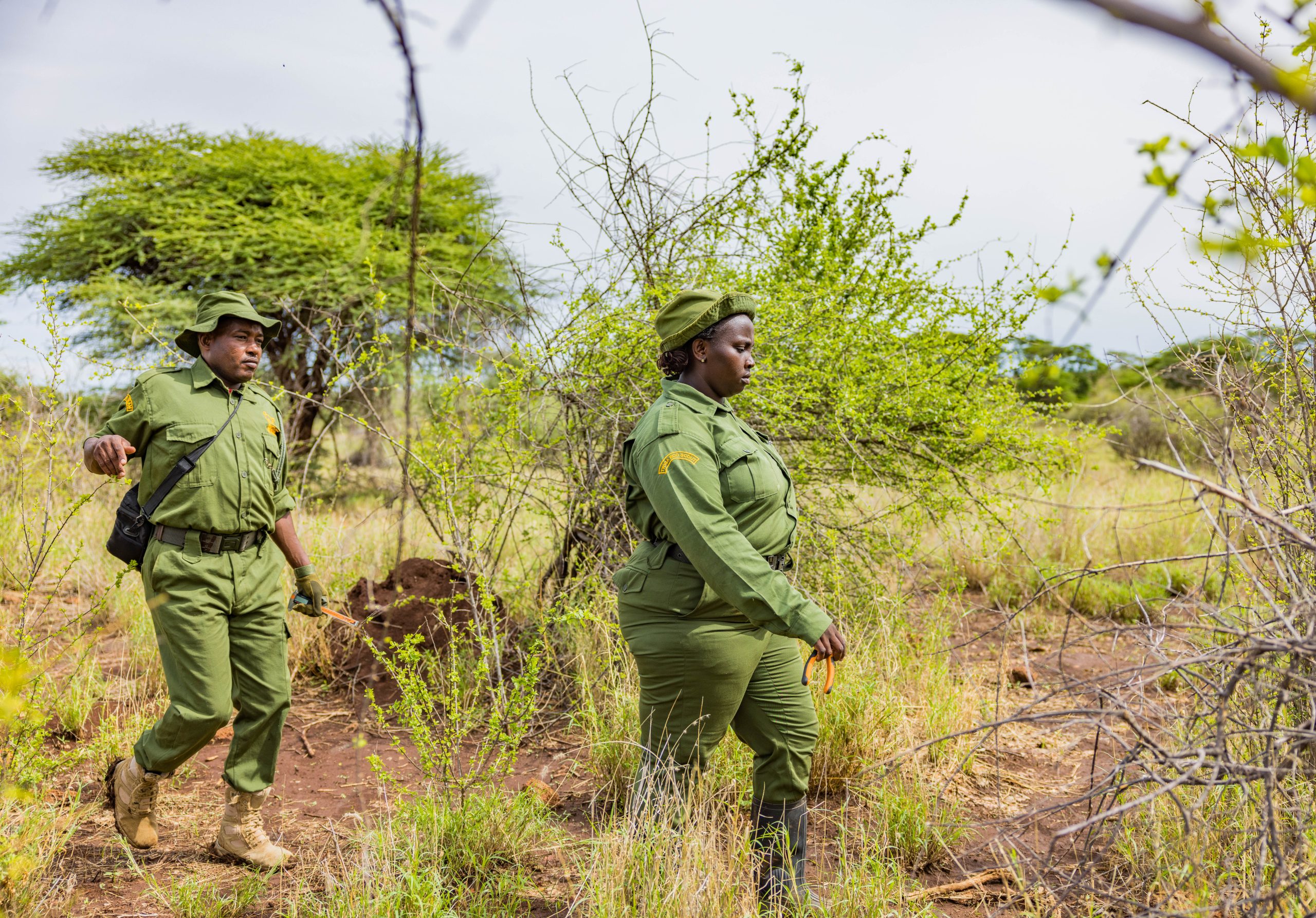
Twiga Team on patrol in Meru ©Peter Ndung’u
To address the issue of poaching, specifically snares, in Meru National Park, our Twiga Team (Twiga means giraffe in Swahili) conducts foot patrols across the rugged and remote terrain, removing and destroying all snares they find. Each time the Twiga Team finds a snare, they record information on the location, type of snare, and animal caught or killed.
We are also initiating de-snaring operations outside of Meru National Park, in known hotspot areas within community lands. This isto complement our community outreach activities in these areas, which are aimed at educating communities about the issues surrounding bushmeat hunting.
We help set up Village Savings and Loan Association groups to empower communities, tackle poverty, and reduce reliance on natural resources such as bushmeat.
Pioneered by Care International three decades ago, these groups are highly effective at giving people, particularly women, access to funds which not only empowers them, but can help lift families out of poverty.
In Meru, limited incomes can mean that people see wildlife and natural resources (such as bushmeat) as an income source, and competition between humans and wild animals for these increasingly scarce resources can result in conflict. Village Savings and Loan Associations can help prevent overreliance on natural resources, by supporting communities financially.
Each association comprises 20-25 people who meet regularly, and pool their savings into a group fund. Members can then access money from the fund to make their ambitions a reality, whether that is starting a new small business, paying for schooling or making home improvements.
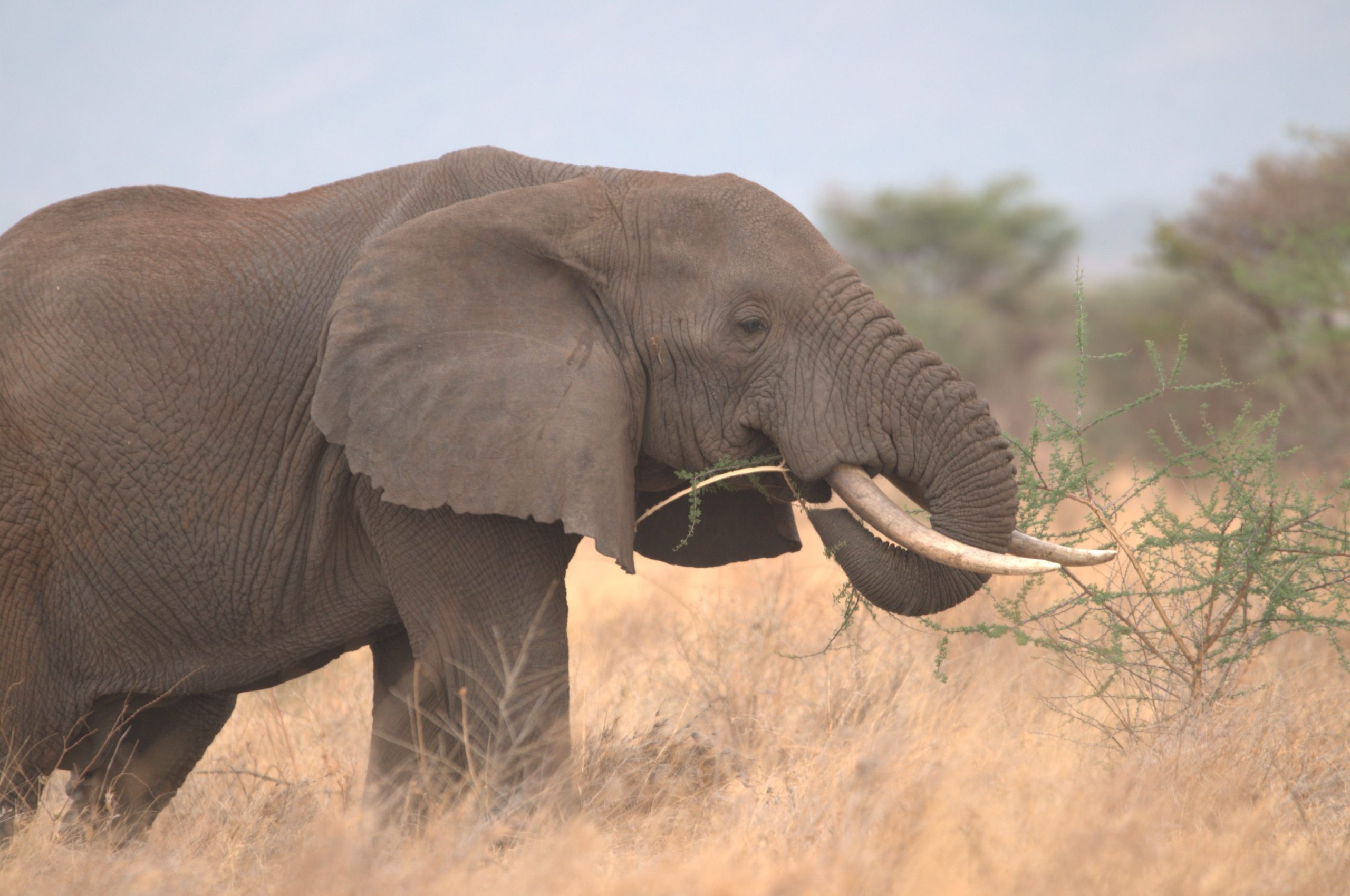
We strive to ensure that all our conservation programmes are evidence based and that we can show the impact of our work. We do this in several ways:
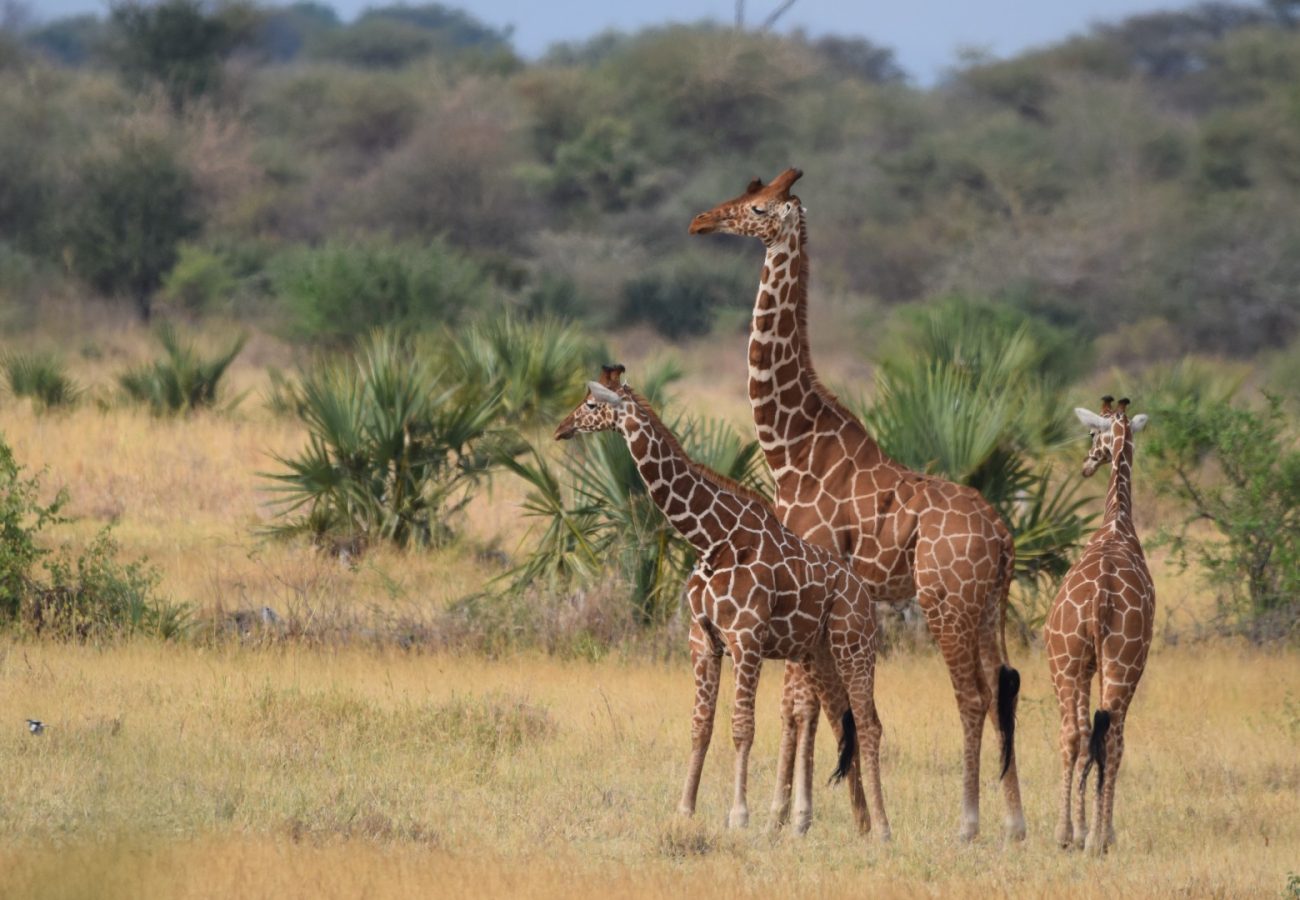
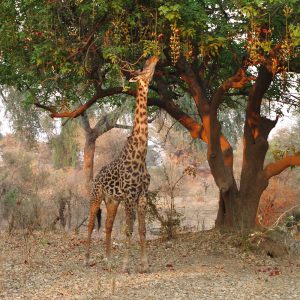 Identified and catalogued 339 elephants across eight families and groups of bulls, representing 101.80% of the estimated 333 elephants found in Meru National Park (Kenya Wildlife Service 2020 aerial survey), which itself is part of the wider elephant population of the Meru Conservation Area which comprises approximately 1,000 elephants.
Identified and catalogued 339 elephants across eight families and groups of bulls, representing 101.80% of the estimated 333 elephants found in Meru National Park (Kenya Wildlife Service 2020 aerial survey), which itself is part of the wider elephant population of the Meru Conservation Area which comprises approximately 1,000 elephants.*As of March 2024
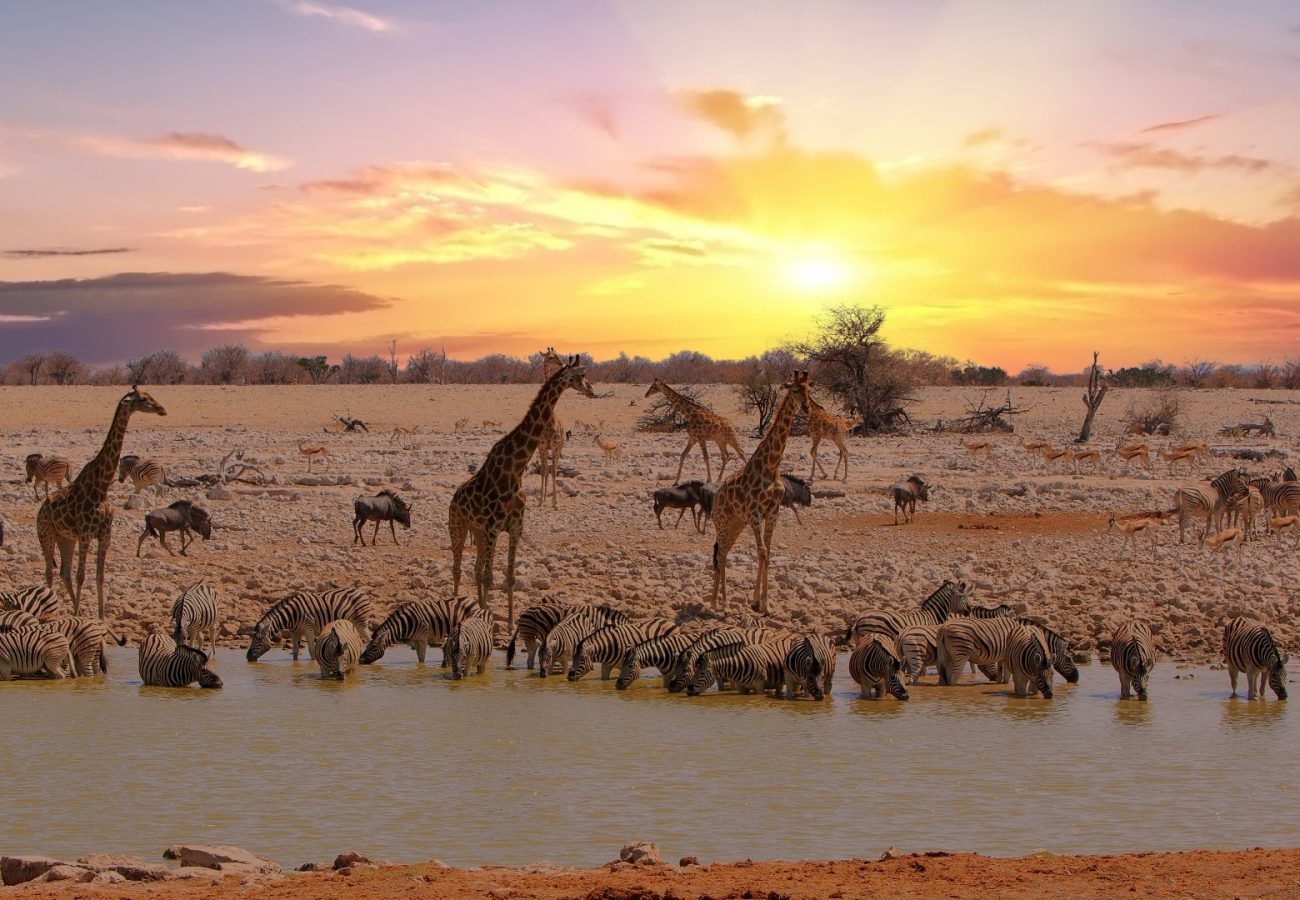
Giving a gift today will help Born Free continue our vital work to protect Meru's giant herbivores.